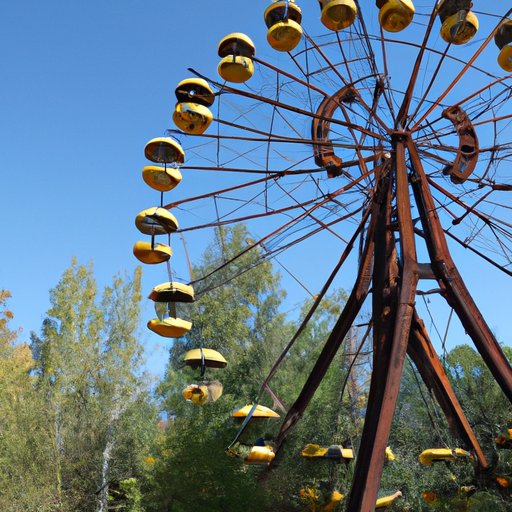
Introduction
Chernobyl, the site of one of the most devastating nuclear disasters in history, still holds a fascination for many. Whether it’s the eerie ghost town of Pripyat or the haunting memories of the disaster, people from all over the world want to visit this area. But with radiation levels still dangerously high, is visiting Chernobyl a good idea? In this article, we’ll explore the risks, realities, and tourism options for visitors looking to explore Chernobyl.
Visiting Chernobyl: Is It Safe?
Chernobyl is home to some of the highest radiation levels in the world. While much of the area is no longer dangerous to visit, visitors must still take precautions to ensure their safety. Radiation exposure can cause long-term damage to the body, so it’s critical to take protective measures when visiting Chernobyl.
Visitors must wear sturdy shoes, long pants, and long-sleeved shirts to protect their skin from contaminated dust. It’s also recommended to wear a gas mask to reduce the risk of inhaling harmful substances.
The Ukrainian government monitors radiation levels in the exclusion zone and provides safe areas for visitors to explore. Tour guides make sure all visitors follow safety protocols and do not wander into contaminated areas. While visitors must accept some risks when visiting Chernobyl, safe practices make the risk small.
Experiencing Chernobyl: A Personal Account
The experience of visiting Chernobyl can be intense and humbling. In 2019, Charles, a freelance writer, visited the area.
“It was a surreal experience to see firsthand how quickly a town can be abandoned and swallowed by nature,” Charles said. “But what struck me most was the resilience of the people who still live in the area. They’ve weathered an unimaginable tragedy and have done so with such grace and dignity.”
Charles was able to talk to some of the people, including the construction workers who are now tasked with cleaning up the area. “They know they’re working in dangerous conditions, but they still do it. They love their homes and their families, and they want to make things better for the next generation.”
Chernobyl Tourism: What You Need to Know
Chernobyl now attracts thousands of tourists annually. However, if you’re planning a trip, there are a few things you need to know. Visiting the exclusion zone is only allowed with an official tour guide, and you must register in advance.
Several tour companies offer a range of packages, from day trips to multi-day tours. Accommodations near the area are basic but functional, and visitors are provided with meals and water.
It’s important to research the tour company you choose to ensure they prioritize safety for their clients and their preservation of the environment.
Chernobyl’s Legacy: Exploring the Aftermath
The impact of the Chernobyl disaster extends beyond the exclusion zone. The explosion released large amounts of radioactive material into the environment, contaminating soil, water, and food.
The consequences have been significant. The disaster forced the evacuation of over 100,000 people, and it’s estimated that around 4,000-16,000 people died as a direct result of the explosion.
Chernobyl also had a significant environmental impact. The explosion created a massive fire, which released radioactive particles into the air. As a result, an area of forest covering not less than 4 to 5 square kilometers was entirely wiped out.
Today, efforts are being made to mitigate the effects of the disaster. The Chernobyl Shelter Fund, established in 1997, aims to secure the site and prevent further contamination. The area has been stabilized, and the radiation levels have decreased, but the effects of the disaster will be felt for generations.
The Myth & The Reality: Separating Fact from Fiction in Chernobyl
There are many myths and misconceptions surrounding Chernobyl. Some people believe the area is still so irradiated that nothing grows, or that the exclusion zone is home to a mutant population. In reality, the area is slowly returning to nature, and wildlife is flourishing.
Nuclear radiation is a dangerous force, but it doesn’t create mutants or beasts. It can cause a range of long-term health problems, but it won’t instantly kill you if you step into the exclusion zone.
It’s important to educate yourself about the realities of radiation exposure before considering visiting Chernobyl.
Conclusion
Visiting Chernobyl is not for everyone, and it is essential to understand the risks and safety precautions before considering a trip. However, for those who can handle the reality of the disaster and want to learn more about the long-term impact on the area, visiting Chernobyl can be a humbling and educational experience. By following safety protocols and respecting the exclusion zone, visitors can gain newfound respect for the people who still call the area home, and gain a better understanding of one of the most significant disasters in modern history.




